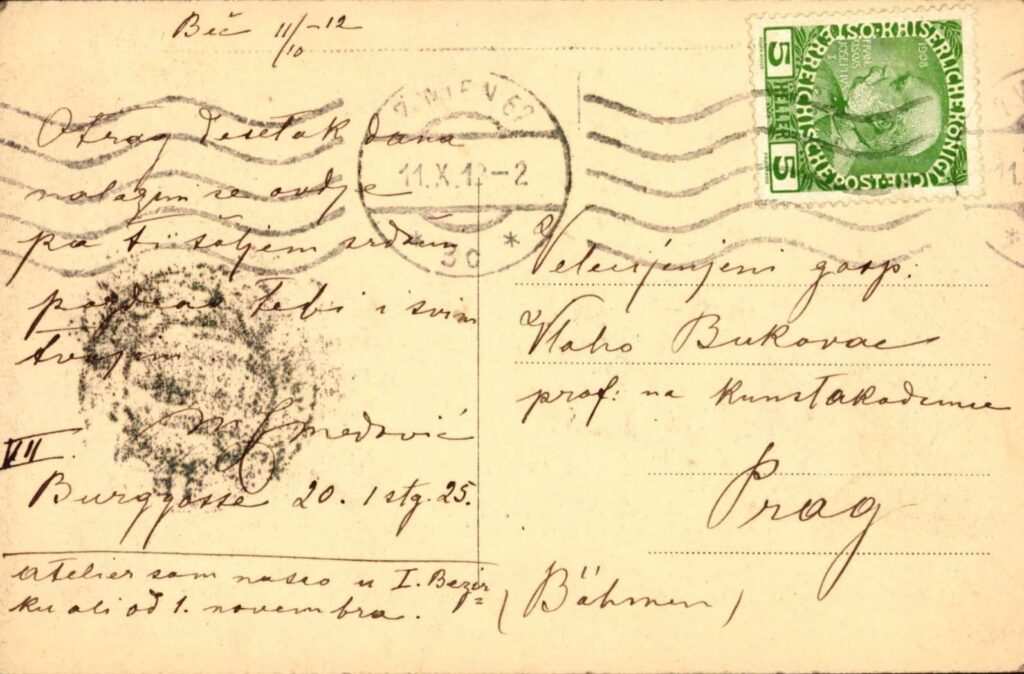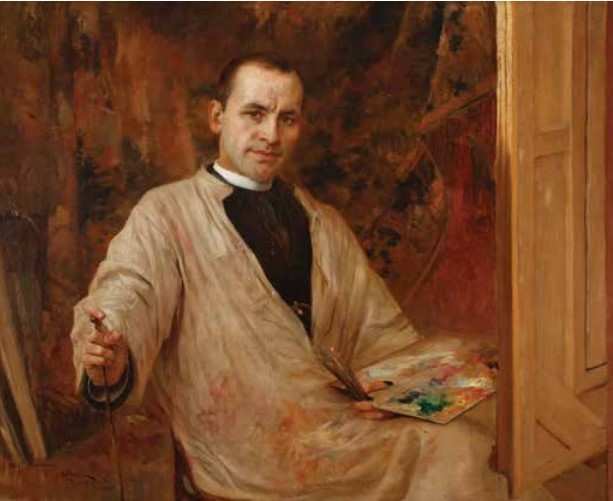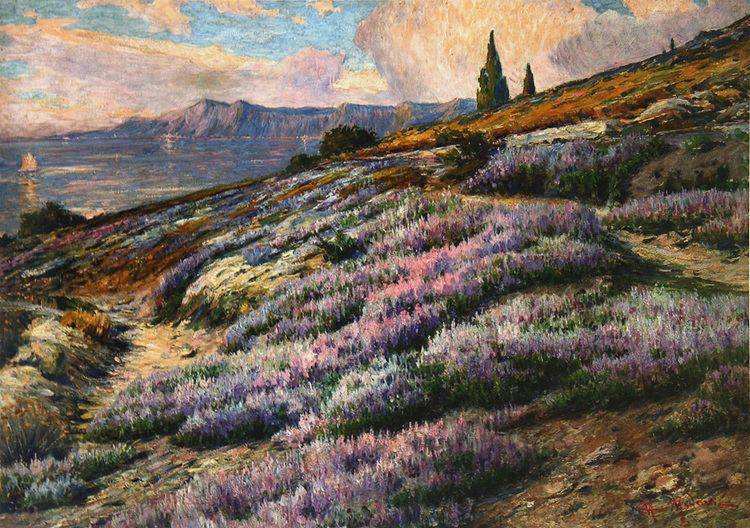Mato Medović, better known as Celestin Medović (1857 – 1920), a renowned Croatian painter from Kuna on Pelješac, was Bukovac’s contemporary and colleague. He was born on November 17, 1857 in a peasant family in the picturesque village of Kuna on Pelješac. He had four brothers and two sisters, and their lives became even more difficult when his father died in his youth in 1867.
Unlike other children of that time who acquired the first traces of literacy from the local pastor, young Mato learned to read and write thanks to Paško Širinić, a supervisor of telegraph wires and poles from Lika. When the first primary school opened in Kuna in 1866, nine-year-old Mato was already skilled in reading and writing, and his teacher appointed him to supervise the work of the first-graders. His talent for drawing was recognized at school, but he still had to wait a few more decades for an art education.
Being from a poor family, while his gift and talent were undoubted, Mato was propelled into the world by the Franciscans. He first met the Franciscan Order as a child, as the monastery of Our Lady of Loreto, better known as Delorita, was located next to his village. Thus, his next home became the Monastery of the Friars Minor in Dubrovnik where he remained until 1880. During this period Mato was ordained and took the name Celestinum, although he had originally chosen Peregrinum.
In the Monastery of the Friars Minor in Dubrovnik, Celestin drew in his room, but until 1879 he was not able to paint in oil. His works were not those of a beginner at all, so more serious works found their place in public and private collections. In the year before he was sent to study painting in Italy, two altarpieces were painted, which are still preserved in their original churches in Konavle. In the Franciscan monastery of Our Lady of the Snow in Cavtat, the painting Stigmatization of St. Francis, and in the Franciscan monastery of St. Blaise in Pridvorje, the main altar is decorated with a picture of the Ascension of Mary. Of all his earlier works and altarpieces, Mary’s Ascension was the most successful piece, which no one would say was painted by an uneducated artist.
Medović received his first education in Rome at the Collegio di san’Isidoro, where he received painting lessons from Lodovico Seitz (1844-1908), a painter of German descent, the same one who with his father, Alexander M. Seitz, did most of his paintings of the interior of the Đakovo Cathedral. His attitude towards painting demanded more, so after moving to Florence he received painting lessons from Antonio Ciseri (1821-1891). However, Ciseri did not satisfy Celestin’s great desires for painting knowledge either, and it was not until 1888 to 1893 that he attended the Königliche Akademie der bildenden Künste in Munich, where he acquired the title of artist.
Vlaho Bukovac and Celestin Medović first met in 1879 when Vlaho visited Celestin’s room in the Monastery of the Friars Minor where he saw his early drawings. They continued to be friends after Medović’s return from school when he moved to Zagreb in 1895, a period when he had already rejected the Franciscan habit. Bukovac writes about their friendship in his autobiography My Life:
On the occasion of the millennial exhibition in Pest, I agreed with my young friends that we Croats would also compete with the Hungarians. These young artists lived off government support in Munich, Stuttgart and Vienna. When I settled in Zagreb, I suggested to Izidor Kršnjavi, the then headmaster, to invite them, and I will, if the government continues to support them, do my best to be a good adviser and teacher to them. (…) We also had our art society, where we practiced on tambourines. Our choir consisted of: Frangeš, Valdec, Čikoš, Auer, Iveković, Bauer, Kovačević, Medović, Alexander and Tišov. We were like brothers and I ran as an elder lead the group. (…)
During this period, Bukovac made several portraits of Medović, of which, according to Vera Kružić Uchytil, the Portrait of Mato Celestin Medović from 1896 is one of the best portraits made by Bukovac. Correspondence between Bukovac and Medović and a photograph confirming their intertwining are also kept in Bukovac House. In the first years in Zagreb, Medović and Bukovac worked in a joint studio in the attic of the Academy Palace in Zagreb. Bukovac appreciated Medović and his painting talent, which he also states in his autobiography:
He offered me and Medović one studio each, but I thanked him in Medović’s name. They wanted to put him in a small studio, and I didn’t want him to be humiliated as a better artist in front of younger and weaker comrades.

After Zagreb, Medović returned to his native Pelješac, where he created his recognizable large landscapes full of purple heather. As much as Bukovac was recognized as an excellent portraitist, Medović was an excellent landscape painter, and both are considered the founders of modern Croatian painting.
Medović spent the last years of his life on Kuna Pelješka, and died on January 20, 1920 in a Sarajevo hospital. He was buried in Kuna in the cemetery of the church of St. Salvation, which he personally painted in 1907.


